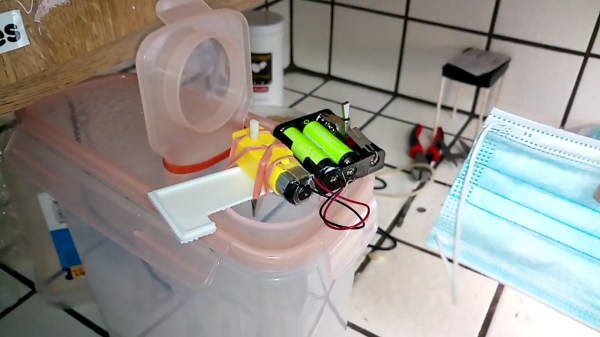We’ve seen a wide variety of mask sanitization solutions, and now, [spiritplumber] from [Robots Everywhere] brings us a frugal and ingenious design – one that you barely even need tools for. This project might look rough around the edges but looks were never a prerequisite, and as a hacker worth their salt will recognize – this is an answer to “how to design a mask disinfector that anyone can build”.
Local shortages of masks have been threatening communities here and there, doubly so if you need a specific kind of mask that might be out of stock. This design could apply to a whole lot of other things where sterilization is desired, too – improving upon concepts, after all, is our favourite pastime.
The design is simple – a battery-powered motor rotating a mask inside a vat of concentrated H2O2, turned into mist by a cheap ultrasonic misting gadget. As the “turntable” rotates a your PPE of choice, making sure that every crevice is graced with cleaning touch of peroxide, it also causes the H2O2 mist to circulate. Fulfilling most important requirements for a proper sanitization system that more complex devices have been struggling with, this approach has certainly earned its place under the sun.
[Robots Everywhere] have shared a small library of their DIY PPE resources with all of us, and that’s not all they work on – recently, we’ve seen their aeroponics project rejuvenating garlic.
Using hydrogen peroxide vapour for PPE sanitization is a well-tested approach by now, as we’ve seen it deployed back in 2020 on a larger scale as part of an FDA-approved design. And if you only have 3% peroxide at hand, might as well try concentrating it further!














